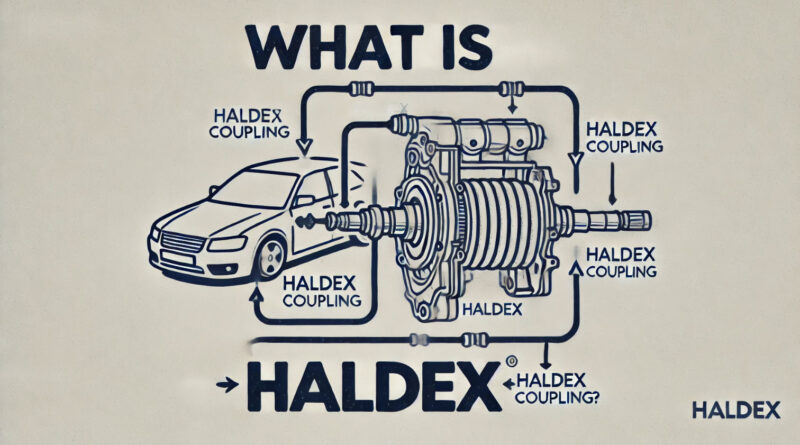What Is Haldex, and Why Does It Matter for Your Car?
If you’ve been shopping for a car with all-wheel drive (AWD), you might have come across the term Haldex. It sounds technical, but it’s actually a smart piece of technology that gives your car better traction, stability, and control when you need it most. Whether you’re driving on a wet road, navigating icy patches, or taking sharp turns, Haldex makes sure your car stays steady and safe.
Here’s everything you need to know about Haldex, how it works, and why it’s such a great addition to modern vehicles.
So, What Exactly Is Haldex?
Haldex is an on-demand AWD system that powers your car’s front wheels most of the time but sends power to the rear wheels when extra traction is needed. Unlike traditional AWD systems that are always running, Haldex activates only when necessary, making it more efficient and fuel-friendly.
In simpler terms, it’s like having a “smart” AWD system that steps in only when it’s needed, saving energy without compromising on control.
How Does It Work?
Here’s how it does its magic:
- Normal Driving: During regular conditions, the system powers just the front wheels to save fuel.
- When Things Get Slippery: If your front wheels start to slip—say on ice, mud, or a wet road— kicks in and sends power to the rear wheels to stabilize the car.
- Constant Adjustments: doesn’t just flip a switch; it constantly monitors road conditions and adjusts power distribution in real time for a smooth ride.
The best part? You don’t need to do anything. It works automatically in the background.
Why Is It Such a Big Deal?
Haldex has gained a reputation for being one of the most practical AWD systems out there. Here’s why drivers love it:
1. Better Fuel Efficiency
Since it operates mostly in front-wheel drive mode, Haldex is more fuel-efficient than traditional AWD systems, which are always active.
2. Improved Traction When You Need It
Whether it’s rain, snow, or gravel, Haldex gives you extra grip exactly when and where it’s needed.
3. A Smoother Ride
By adjusting power distribution in real time, the system ensures your car stays stable, even during sharp turns or on uneven roads.
4. Lightweight and Compact
Unlike bulky AWD systems, Haldex is compact and doesn’t add too much weight to your car. This helps with fuel economy and performance.
Which Cars Use Haldex?
Haldex systems are popular in vehicles from several well-known brands, particularly those under the Volkswagen Group. Here are some examples:
- Volkswagen: Golf R, Tiguan, and T-Roc
- Audi: A3 Quattro, TT, and Q3
- Volvo: XC40, XC60, and V60 Cross Country
- Seat/Cupra: Cupra Formentor and Ateca
- Skoda: Kodiaq and Octavia 4×4
If you’re driving one of these cars, there’s a good chance it’s equipped with Haldex AWD.
How Does Haldex Compare to Other AWD Systems?
Haldex isn’t the only AWD system out there, but it has some unique advantages. Here’s how it stacks up:
| Feature | Haldex AWD | Full-Time AWD | 4WD (Four-Wheel Drive) |
|---|---|---|---|
| Operation | On-demand, engages when needed | Always active | Manually engaged by the driver |
| Fuel Efficiency | More fuel-efficient | Less efficient | Least efficient |
| Best Use | Everyday driving + bad weather | Constant AWD needs | Off-road or rugged terrain |
Haldex strikes a balance between efficiency and performance, making it a great choice for everyday drivers who need occasional AWD capabilities.
What Are the Downsides?
While Haldex is fantastic, it’s not without its limitations. For instance:
- Not Ideal for Hardcore Off-Roading: If you’re planning to tackle extreme terrains, a full-time AWD or 4WD system might be better.
- Maintenance Required: Like any advanced system, Haldex needs proper care to stay in top shape.
How to Maintain a Haldex System
Taking care of your system is simple if you stay on top of regular maintenance. Here’s what to do:
- Change the Fluid: The coupling uses a special oil that needs to be replaced every 20,000–40,000 miles (check your car’s manual).
- Inspect for Leaks: Keep an eye out for fluid leaks around the system.
- Check the Pump: The hydraulic pump is crucial for the system’s operation—make sure it’s functioning properly.
Following these steps will ensure your system continues to work like a charm.
Who Is Haldex For?
It is perfect for drivers who want the best of both worlds: the efficiency of front-wheel drive and the added security of AWD when conditions demand it. If you often drive in areas with unpredictable weather—think snow, rain, or icy roads—a car with Haldex AWD is a smart choice.
Final Thoughts
Haldex is a clever, efficient AWD system that offers extra grip and stability without wasting fuel. Whether you’re driving in the city, cruising on the highway, or braving wet or icy roads, Haldex has your back.
Its ability to adapt to changing conditions makes it a standout feature in many modern cars, especially those designed for drivers who want reliability, safety, and performance all in one package. So, if you’re considering a car with Haldex, rest assured—you’re in good hands.
Buying a used VW. Buying used vauxhall, BMW, Jaguar, Ford, Volvo, Range rover, Bentley, Aston Martin, Porsche, Ferrari, Lamborghini, Maserati, Hyundai, Tesla, Honda, Pagani

